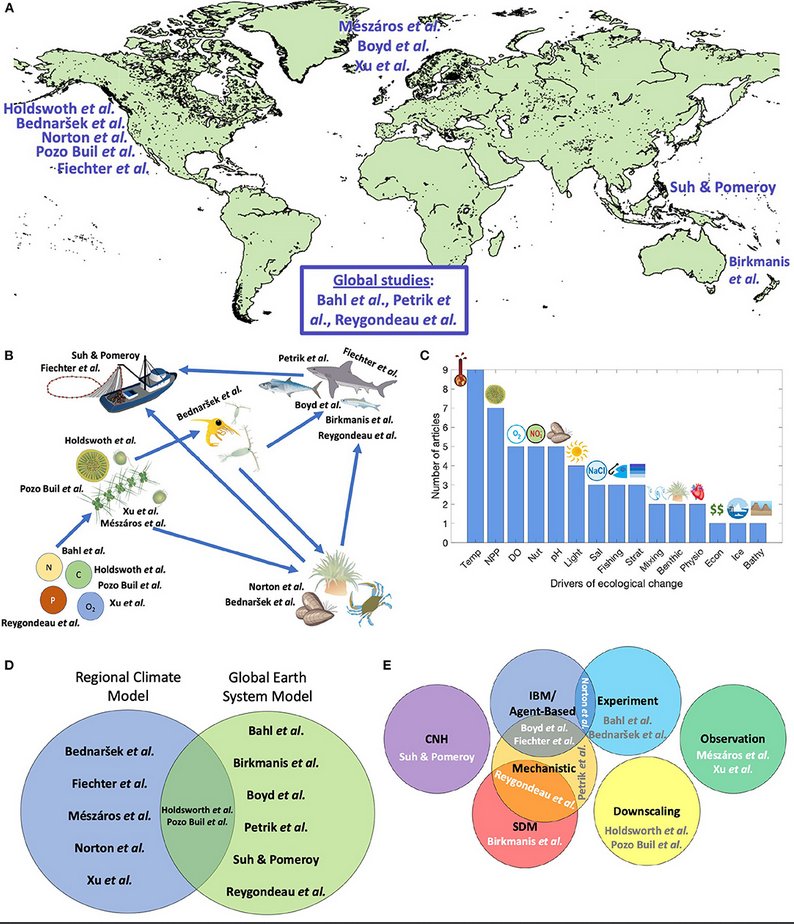Editorial: Ecological Applications of Earth System Models and Regional Climate Models
New publication by Rebecca G. Asch, Johnna M. Holding, Darren J. Pilcher, Sara Rivero-Calle and Kenneth A. Rose

Editorial on the Research Topic
Ecological Applications of Earth System Models and Regional Climate Models
Earth system models (ESMs) that couple sub-models describing atmospheric and oceanic dynamics with models of the cryosphere and biosphere are increasingly used to project climate change. Regional climate models (RCMs) function similarly but focus on regional scales with finer resolution. Due to the inclusion of lower trophic levels in ESMs (phytoplankton, zooplankton), these models are increasingly applicable for addressing ecological questions. While ESMs and RCMs do not typically represent higher trophic levels, they provide insights through: (1) coupling with mechanistic upper trophic level models, and (2) providing outputs to parameterize statistical, habitat-based models. Both types of analyses are increasingly used to forecast the dynamics of commercially and ecologically important species for management (Payne et al., 2017; Tommasi et al., 2017; Jacox et al., 2020). There are challenges related to using ESMs to explore ecological questions due to their coarse spatial and taxonomic resolution and a lack of understanding by many ecologists of the structural differences among different ESMs (Kearney et al., 2021). This Research Topic (RT) emerged as a result of the 2014 Ecological Dissertations in Aquatic Sciences Symposium, which led to a manuscript (Asch et al., 2016) and a session at the 2019 Aquatic Sciences Meeting entitled “Ecological Applications of ESMs and RCMS.” The RT includes papers from the 2019 conference session and additional contributions from the community.
